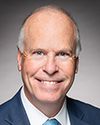Good morning.
My name is Claire Dawson and I'm the senior manager for the fisheries and seafood initiative at Ocean Wise. I am joining today as a witness to this committee from the traditional territories of the Musqueam, Tsleil-Waututh and Squamish First Nations in Vancouver to speak about the traceability of fish and seafood products in Canada.
I am grateful for the opportunity to speak to the honourable members of the committee about this pressing topic.
As Canada’s most recognized sustainable seafood program, Ocean Wise is committed to working with businesses along the seafood supply chain to ensure that Canadian consumers have access to information about their seafood products. The information provided by traceability programs is critical for three main reasons. The first is to ensure that Canadians can make informed choices about their foods. The second is to ensure that we minimize the environmental and economic risks posed by seafood fraud and an illegal, unreported and unregulated catch. The third reason is to celebrate the efforts of fishing families across Canada, who work hard to put responsible, sustainable and Canadian seafood on dinner plates around the country and across the globe.
To my first point about Canadians needing information to make informed choices, without traceability, we have ambiguity. Most consumers in Canada want to be able to make choices that reflect their environmental values about seafood, but they need our help to do so. A recent study commissioned by Oceana indicates that 86% of Canadians are in support of an overarching traceability program for our domestic seafood products. However, currently, most businesses buying and selling seafood products do not—or are unable to—trace information on products from the water to the plate, aside from the basics that may be required for safety, such as to execute a product recall.
With thousands of species available on the Canadian market, it is unrealistic to expect consumers, businesses, chefs and others to be able to determine the true source of the products they're consuming, without that information being required to travel with the product. This means consumers currently lack the information they need to make an informed choice about their seafood, and businesses with more sustainable or socially responsible practices don't get the benefits or recognition they deserve. It also makes it costly to be a first mover in the traceability space. It's almost a first-mover disadvantage, currently, as it has huge impacts to their bottom line.
To my second point that traceability can help minimize environmental and economic risks of seafood, seafood follows the highly complex path from water to plate, often changing hands as many as five or six times before reaching the final point of sale. The opacity of the supply chain is one of the main reasons seafood is prone to fraud and mislabelling. Without knowing where or how a given seafood was produced, it is impossible to determine its environmental footprint.
Without knowing the species' scientific name, in addition to the common name, businesses can make substitutions, sometimes swapping high-value species for low [Technical difficulty—Editor] or wild, as we've heard. This can cost consumers, who end up paying for a product they aren't getting. Businesses can also easily substitute illegally caught product into legitimate supply chains due to this opacity. Aside from costing the environment and businesses, these practices can also threaten our domestic food security.
To my third point about it being costly for businesses to try to do the right thing, the current lack of traceability costs us all. Current studies estimate that legitimate Canadian fishers lose up to $379 million a year in potential revenue, and the lack of transparency costs the government of Canada up to $94 million annually in lost tax revenue.
In addition, access to lucrative international markets may be at stake. As we've heard, the European Union has strict requirements for the traceability of the seafood products they import. As it is a major market for Canadian-caught products, investment by the federal government in a traceability program would help to ensure that Canada’s responsibly caught and well-managed seafood remains competitive in this global marketplace.
Canadian fishing families work hard to abide by our strict domestic policies, provide employment in their local communities and feed Canadian families. By supporting a traceability program for their products, we're supporting fishing as an important livelihood in this country and ensuring that we're stewarding our vast aquatic resources that we're blessed with for generations to come.
It is clear that the benefits of investing in a Canada-wide traceability program now will pay dividends later.
Canada has the world’s longest coastline, and fishing is not only integral to our food security, but also to our national identity and way of life.
With so much positive support for increased traceability of Canadian seafood products, now is the perfect time for the federal government to show leadership in this space by investing in the sector. This investment would enable Canada to lead in producing the sustainable and responsible seafood we're known for and to remain globally competitive.
Thank you for your time. I look forward to your questions.




